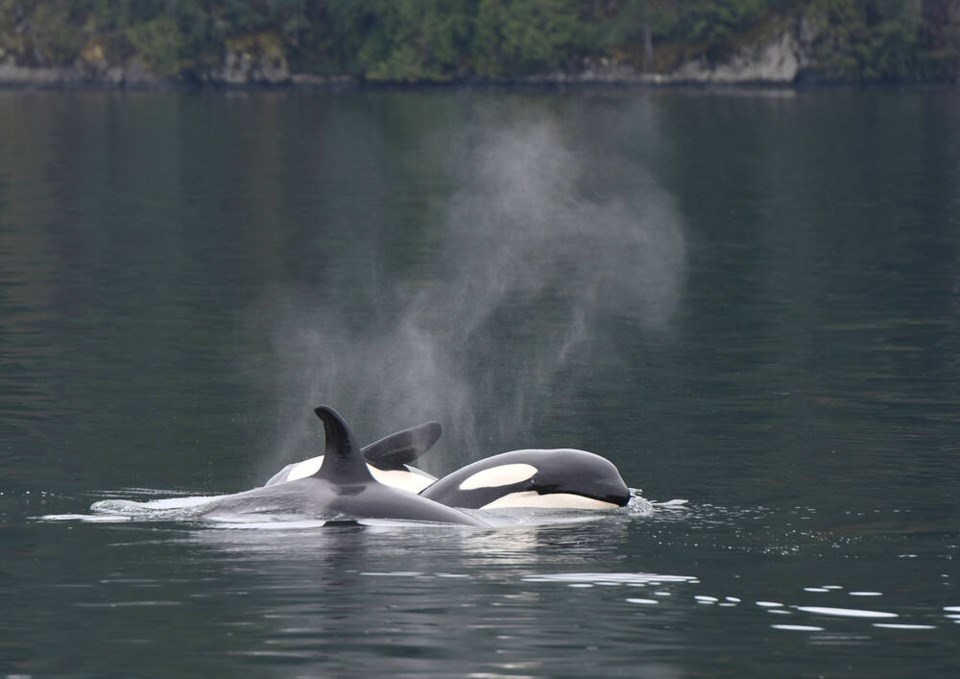Scientists at West Vancouver’s Pacific Science Enterprise Centre have devised a novel way of studying the Salish Sea’s endangered southern resident killer whales: looking for specks of their DNA left floating in their wakes.
Ocean Wise biologists recently completed a study showing they can conclusively determine the sex of a whale just by skimming a couple of litres of water from the surface of the ocean and analyzing the sample in the lab.
The breakthrough could help unlock other genetic secrets that may be critical to the conservation of the different populations of whales at risk of extinction.
“That’s the most exciting application. I see this going beyond killer whales and beyond our coast to whales all around the world,” said Chloe Robinson, director of the whales initiative at Ocean Wise. “It’s really important for conservation and understanding how and if these species have a future.”
After the whale goes for a deep dive under the surface, scientists aboard a boat collect a water sample that most likely includes some of the whale’s skin cells but also maybe traces of blood, mucous or fecal matter. The sample is immediately run through a filter onboard the boat, leaving scientists with a filter paper they can take straight to the lab on the West Vancouver waterfront for analysis.
Knowing the sex ratio of a whale population offers a window into their capacity for reproduction and the limits of their genetic diversity. Because their numbers are so few — the official count is at 74 orcas — the southern residents are known to be inbreeding, Robinson said.
“Does this look like there’s enough DNA in the gene pool of this population to progress further and to continue to multiply?” Robinson said. “We can better understand the health of populations based on how much genetic diversity there is, and what the male versus female ratios are. Is there enough of both to keep that population going?”
Because of their endangered status, marine biologists already know the sex of the current southern resident population, which is what allowed the team to cross reference their lab results with existing knowledge. But, because of the proof of concept, Robinson said they can now pursue data on lesser-known populations.
While orcas give some visual clues as to their sex, including larger dorsal fins for males, and females keeping calves close to them, other species don’t make it so easy because they have no sexual dimorphism, meaning males and females look the same. That includes the remaining humpback whales, which were once hunted nearly to extinction in the waters around B.C.
“We still don’t really understand their sex ratios, which means we don’t really understand how the population’s viability, long term, is looking,” Robinson said.
Robinson said the next phase of the study, which was primarily funded by whale watching tour business Prince of Whales, will seek to push the limits on what other genetic information they can isolate from environmental DNA. To get the same information without environmental DNA, scientists would have to attempt live biopsies — a highly invasive approach that involves shooting the whale with a crossbow, which is difficult for researchers and puts the whales at risk of infection and death.




